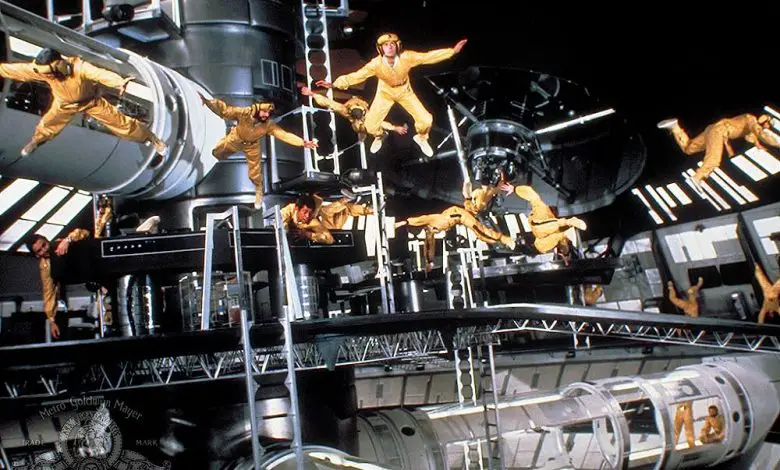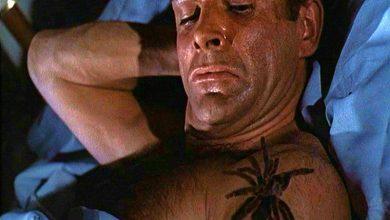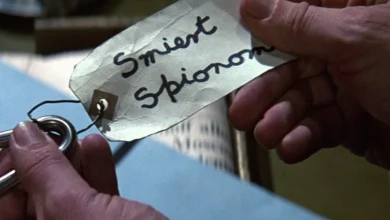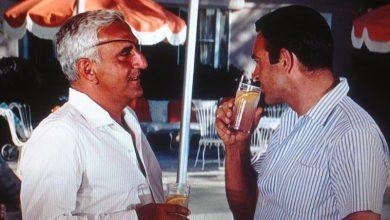
The release of “The Spy Who Loved Me” in 1977 marked a turning point for the James Bond franchise. Audiences had come to expect a steady stream of thrilling Bond films, and as the end credits rolled, they were tantalized with the promise of the next adventure, “For Your Eyes Only.” However, plans changed due to an unexpected phenomenon that swept through the film industry: Star Wars.
In this article, we explore the influence of Star Wars on the James Bond movies and how it led to a shift in the franchise’s direction. We delve into the postponement of “For Your Eyes Only,” the emergence of “Moonraker” as a space-centric film, the collaboration with NASA, and the impact on subsequent Bond installments. Let’s embark on this journey to understand how the success of Star Wars propelled James Bond into the realms of outer space.
Key Takeaways
- The success of Star Wars in 1977 had a profound impact on the James Bond franchise, leading to a shift towards space adventures.
- “For Your Eyes Only” was postponed as the Bond machine decided to capitalize on the popularity of space-themed films and explore new frontiers.
- The film “Moonraker” became the embodiment of this shift, incorporating futuristic gadgets, space battles, and a storyline that aimed to capture the zeitgeist.
- The collaboration with NASA added authenticity to “Moonraker” and aimed to bridge the gap between the fantasy of Star Wars and the grounded world of Bond.
- The success of “Moonraker” influenced future Bond films, as the franchise continued to incorporate elements of science fiction, advanced technology, and larger-than-life action sequences.
The Influence of Star Wars on James Bond Films: A Shift towards Space Adventures
In 1977, the release of “The Spy Who Loved Me” marked a time when audiences had grown accustomed to a steady flow of exciting James Bond movies. As the end credits rolled, moviegoers were tantalized with a promise of the next installment, “For Your Eyes Only.” However, unforeseen circumstances led to a change in plans, and what followed was the unexpected impact of Star Wars on the Bond franchise.
The immense success of George Lucas’s space epic in 1977 had a profound influence on the direction of the Bond series. Instead of continuing with the Earth-bound adventures that had become a trademark of the franchise, the Bond machine set its sights on the vastness of space. The result was the release of “Moonraker” in 1979, a film that aimed to capture the zeitgeist and capitalize on the space-centric craze spurred by Star Wars.
To make “Moonraker” appear more plausible within the Bond universe, the producers took a number of steps. Beyond the obvious inclusion of spies instead of Jedi, they sought consultation with NASA, the renowned space agency. This collaboration aimed to lend an air of authenticity and scientific accuracy to the film’s portrayal of space travel and technology. By involving NASA, the creators hoped to bridge the gap between the fantasy of Star Wars and the grounded world of Bond.
Additionally, an ambitious plan was put in place to premiere “Moonraker” in Houston, Texas, close to NASA’s Mission Control, during the week of the 1981 space-shuttle launch. This location choice aimed to further emphasize the film’s connection to real-world space exploration. However, due to technical issues, the shuttle launch was delayed, and the movie ultimately premiered in London instead.
The decision to align the Bond series with the space genre was a departure from the franchise’s traditional formula, which primarily revolved around espionage and thrilling terrestrial missions. Nevertheless, the producers believed that capitalizing on the public’s fascination with space and science fiction could help sustain the franchise’s popularity.
By venturing into space, the Bond series could explore new frontiers and engage with a broader audience. “Moonraker” introduced futuristic gadgets, stunning space battles, and a memorable villain intent on dominating the world from orbit. While the film deviated from the original vision of “For Your Eyes Only,” it successfully tapped into the cultural climate of the late 1970s and early 1980s.
The impact of Star Wars on the Bond franchise extended beyond just one film. While “For Your Eyes Only” was postponed until 1981, the success of “Moonraker” influenced subsequent installments. Future Bond films continued to incorporate elements of science fiction, advanced technology, and larger-than-life action sequences. The shift towards space adventures also opened up opportunities for imaginative storytelling and creative exploration within the Bond universe.
FAQ: The Impact of Star Wars on James Bond Movies
1. How did the success of Star Wars influence the direction of James Bond films?
The success of Star Wars in 1977 had a significant impact on the James Bond film series. Audiences were captivated by the space epic, and this prompted the Bond franchise to shift its focus towards space adventures. The producers recognized the public’s growing fascination with the genre and decided to explore new frontiers within the Bond universe. As a result, films like “Moonraker” were created, featuring space-centric storylines and advanced technology that mirrored the excitement and spectacle of Star Wars.
2. Why was the release of “For Your Eyes Only” postponed?
The release of “For Your Eyes Only” was postponed because of the unexpected influence of Star Wars on the Bond franchise. With the success of “Moonraker” and the widespread popularity of space-themed films, the producers decided to capitalize on this trend and further develop the space adventure concept for Bond. As a result, “For Your Eyes Only” was delayed until 1981 to allow for the production of “Moonraker” and the continuation of the space-centric storyline.
3. How did the collaboration with NASA impact the making of “Moonraker”?
The collaboration with NASA had a profound impact on the making of “Moonraker.” The producers sought consultation with the renowned space agency to ensure a level of authenticity and scientific accuracy in the film’s portrayal of space travel and technology. By involving NASA, the creators aimed to bridge the gap between the fantasy of Star Wars and the grounded world of James Bond, making the space-centric storyline of “Moonraker” more feasible and believable within the Bond universe.
4. What were the initial premiere plans for “Moonraker”?
The initial premiere plans for “Moonraker” involved a grand premiere in Houston, Texas, close to NASA’s Mission Control, during the week of the 1981 space-shuttle launch. The choice of location aimed to further emphasize the film’s connection to real-world space exploration and create a unique experience for the audience. However, due to technical issues, the shuttle launch was delayed, and the movie had to premiere in London instead.
5. How did “Moonraker” differ from the traditional James Bond formula?
“Moonraker” marked a departure from the traditional James Bond formula, which primarily revolved around espionage and terrestrial missions. Instead, the film ventured into space, embracing a more science fiction-oriented storyline. It introduced futuristic gadgets, captivating space battles, and a memorable villain seeking to conquer the world from orbit. By incorporating elements of the space genre, “Moonraker” offered a fresh take on the Bond universe and expanded the franchise’s storytelling possibilities.
6. Did the success of “Moonraker” influence future James Bond films?
Yes, the success of “Moonraker” had a lasting influence on future James Bond films. The positive reception and popularity of the space-centric adventure encouraged the franchise to continue incorporating elements of science fiction, advanced technology, and larger-than-life action sequences. Subsequent films embraced the imaginative storytelling possibilities that the space genre offered, allowing the Bond series to evolve and captivate audiences with thrilling adventures both on and off the Earth.
7. How did the Bond series adapt to the cultural climate of the late 1970s and early 1980s?
The Bond series adapted to the cultural climate of the late 1970s and early 1980s by recognizing the audience’s fascination with space exploration and science fiction. By shifting the focus towards space adventures, the franchise tapped into the zeitgeist created by the success of Star Wars. This adaptation allowed the Bond series to remain relevant and capture the imagination of audiences during a time when space-themed films were capturing the collective imagination.
8. Were there any other changes in the Bond series as a result of the Star Wars influence?
Yes, the Star Wars influence led to significant changes in the Bond series. Beyond the shift towards space adventures, the franchise also incorporated more advanced technology and embraced larger-scale action sequences. The success of Star Wars highlighted the audience’s desire for thrilling and visually spectacular films, and the Bond series responded by pushing the boundaries of action and spectacle to meet these expectations.
9. Did the Bond franchise return to its traditional formula after the space-centric films?
Yes, after the space-centric films, the Bond franchise eventually returned to its traditional formula. While elements of science fiction and advanced technology continued to be present in future films, the focus shifted back to espionage and terrestrial missions. The Bond series demonstrated its ability to adapt to changing trends while maintaining the core essence of the iconic character, ensuring its longevity and continued popularity among audiences.
10. How did the Star Wars influence contribute to the broader evolution of the Bond universe?
The Star Wars influence played a significant role in the broader evolution of the Bond universe. It opened up opportunities for imaginative storytelling and creative exploration within the franchise. By embracing the allure of space exploration and science fiction, the Bond series expanded its horizons and ventured into new territories. The impact of Star Wars served as a catalyst for the Bond franchise to evolve, keeping the character and the series fresh and relevant in the ever-changing landscape of popular culture.
Conclusion
The impact of Star Wars on the James Bond movies cannot be overstated. What began as a promise of “For Your Eyes Only” was momentarily deferred as the allure of space adventures took hold of the franchise. The release of “Moonraker” marked a departure from the traditional Bond formula, immersing audiences in a world where spies traversed the cosmos instead of Earth-bound missions.
The collaboration with NASA lent an air of authenticity to “Moonraker,” adding scientific accuracy to the film’s portrayal of space travel and technology. Despite the initial plan to premiere the film in Houston, near Mission Control, technical issues led to a London premiere. Nevertheless, “Moonraker” successfully capitalized on the public’s fascination with space and sci-fi, paving the way for future Bond films to explore new storytelling territories.
While the Bond franchise eventually returned to its traditional formula, the influence of Star Wars forever left its mark. The success of “Moonraker” and the subsequent incorporation of science fiction elements showcased the franchise’s ability to adapt and evolve with the changing cultural landscape. Ultimately, the impact of Star Wars on James Bond not only propelled the series into space but also solidified its place in the annals of cinematic history, ensuring that the adventures of the suave secret agent would continue to captivate audiences for generations to come.









